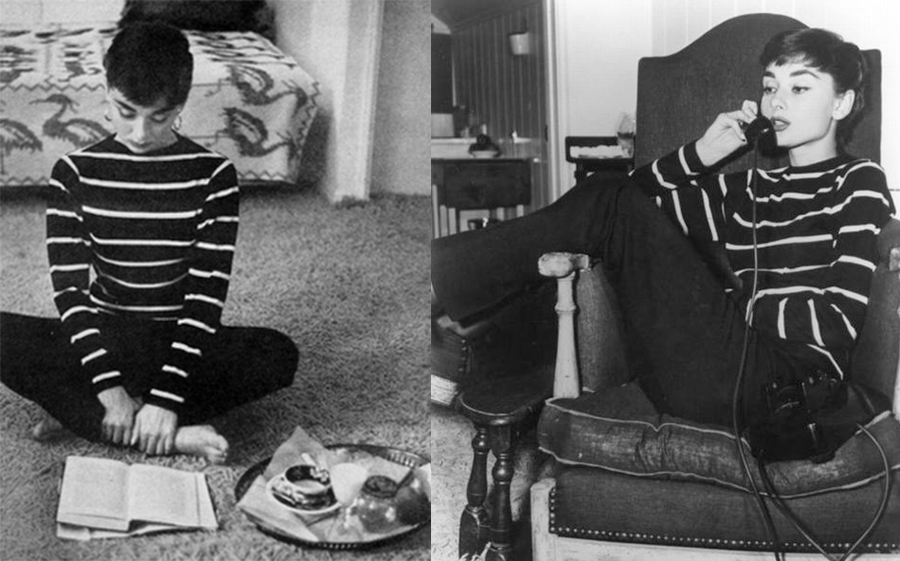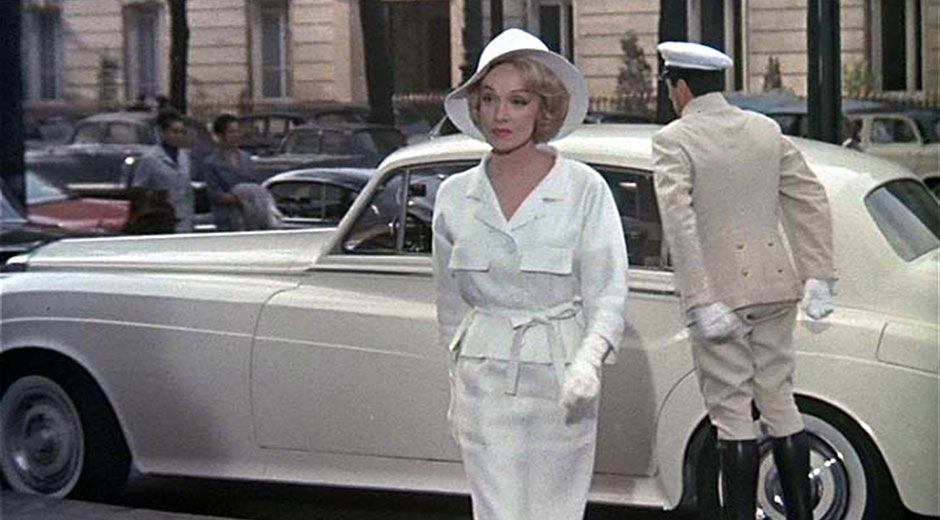Fashion Industry Broadcast and Style Planet TV are proud to bring you their new Netflix Original series ‘The Girl’s Guides to the World of Designer Fashion’. In Series 5 of this new Original Series we explore the History of Paris Fashion.
Many cities are considered fashion capitals. Only one can be the fashion capital of the world. That city is Paris.
Paris is a world leader in style. In the 17th century, the French fashion industry rose to the pinnacle of the international textile trade, cementing itself as a global power in fashion for hundreds of years. During this time it has attracted the world’s foremost designers and imbued its citizens with an unmatched and innate sense of style.
To this day, France an enduring reputation as a style leader, with fashion holding a significant place within French cultural life. Luxury labels Chanel, Dior, Yves Saint Laurent, Louis Vuitton, Givenchy and Jean Paul Gaultier have set an impeccably high standard for couture.
The city of Paris is at the centre of the French fashion industry, remaining one of the big four Fashion Week events each season. Parisian couture has a reputation like no other, feeding a public hungry for the latest in stylistic innovation and superior quality. The historic Avenue des Champs-Élysées is a must-see on any visit to Paris and is a fashion-lovers paradise.
So how did Paris become the international beacon of fashion that it is today?
The city’s legacy begins with the “Sun King”, King Louis XIV, whose love of the lavish and luxurious is immediately apparent in the gilded aesthetics of the Palace of Versailles. King Louis secured the textile industry under the control of his royal court, creating a national dependence on luxury goods. Even centuries after his reign, fabrics and garments of the greatest quality called France their home.
Haute couture or “high fashion” is a distinctly French invention: a style hand-crafted from extravagantly expensive and high-quality fabrics. Extreme attention to detail and individually specific tailoring set haute couture apart from the rest and changed the game when it came to the textile industry. Designers and tailors had to base their businesses in the flourishing hub of France, or risk being left behind.
Many famous French fashion labels have their roots in the luxury goods trade. Hermès began as a supplier of coach harnesses and equestrian accoutrements in 1837. The Hermès clientele consisted of only the uppermost circles of high society, but the brand was also able to adapt to changes in transportation, developing travel luggage with a reputation for quality. Still today, Hermès Kelly and Birkin bags are symbols of status, in part due to their pedigree as a Parisian brand.

In the 1900s, fashion transformed from this more practical trade into its modern form, even something approaching visual art. In the early years of the century, Parisian designer Paul Poiret emerged, in the view of many, as fashion’s first genius. The son of a respected cloth merchant, Poiret began working for prominent couturier Jacques Doucet as a teenager. In 1903, upon opening his own fashion house in Paris, Poiret introduced the world to his waiflike, high-waisted womenswear silhouette. The dresses presented the public with narrow lines and geometric shapes, rendering the once-venerated hourglass suddenly old-fashioned. For the first time, corsets and layers upon layers of clothing were out of fashion. This freedom of movement would characterise French fashion for years to come.
One of the most respected houses of fashion in the world is Chanel. The household name and shorthand for sophistication began in 1913, when Gabrielle “Coco” Chanel opened her first boutique.
In 1921, the label’s first fragrance, Chanel No. 5 was released to immediate acclaim. The best-selling fragrance in the world, this was the first time a fashion house and created a perfume. In 1954, Marilyn Monroe reignited popularity of the scent when she was asked “What do you wear to bed?” and answered, “Just a few drops of No5”.
The brand is admired the world over for its well-fitted suits which take inspiration from menswear, focusing on tailoring and moveability. Poiret’s freedom of movement informed Chanel’s work, and she ran with it, infusing her designs with the liberation of the flapper age. Chanel created the first Little Black Dress in 1926, a style that would take the fashion world by storm and become an enduring fashion staple. Vogue Magazine compared her LBD to the popularity of the Ford motorcar.
In the 1950s, the ‘breton’ stripe gained fashion prominence. Originally a uniform for the French navy, the now stereotypical French style became popular for its casual appeal, appearing in Chanel’s 1917 nautical collection.
The stripes were worn by Audrey Hepburn, James Dean and Brigitte Bardot, and was also shown in the French new wave cinema of Jean-Luc Godard. It has become an easy visual signifier of French culture, another way that Coco Chanel has altered the course of fashion history.

But there’s a darker side to the Chanel story that is often overlooked. In recent years, the world has become aware of her covert secret life as a Nazi agent. Chanel became a spy for the Germans and also attempted to utilise Nazi anti-Jewish laws to her advantage, taking part of her business back from Jewish-owned companies. She never saw any ramifications for her allegiance to the Nazis during her lifetime.
The French fashion industry as a whole was significantly affected by the Second World War and the German occupation of Paris. With many stores forced to close their doors during this time, the world’s attention shifted towards American designers.
Christian Dior spearheaded the post-war aesthetic. He began his eminent brand in 1947, with the objective of redefining the way that women dressed. After the rationing and bleakness of the war, the House of Dior became known for couture, and following in the footsteps of Chanel, perfume and beauty products. Unlike Chanel, however, Dior returned traditional feminine silhouettes to fashion, cinching women back into corsets and hourglass shapes.
Dior trained under designers Robert Piguet and Lucien Lelong. Dubbed the “New Look”, his first collection carved a sophisticated niche in Parisian fashion. The world was prepared to indulge in luxury once more, and Dior provided fashion devotees with the extravagance that they craved. Structured silhouettes and fabrics of the highest quality optimised Dior’s style. The label returned Paris to its place at the forefront of fashion.
Dior created every outfit for Marlene Dietrich in the Hitchcock film Stage Fright 1950.The looks exemplify the Dior philosophy of treating couture as a kind of architecture. Precision tailoring and innovative shapes transform the wearer. Dior’s outline dominated the 1950s.
Dior said, “a dress is a piece of ephemeral architecture, designed to enhance the proportions of the female body”.

When Dior died of a heart attack in 1957, his senior assistant took the reigns of the company; a then little-known 21-year-old designer Yves Saint Laurent.
After working as Dior’s creative director for four years and taking the brand to dizzying new heights, Saint Laurent launched his eponymous label in 1961. In a decade of social revolution and upheaval, gender roles were once again at the forefront of fashion. Motivated by the power of menswear, Saint Laurent took men’s structures and tailoring to womenswear, changing to course of women’s fashion forever. The label took clothing to new, more gender fluid places, crossing between traditional styles of men’s and women’s fashion. Saint Laurent established women’s power dressing at a time when women were still expected to be stereotypically feminine.
Saint Laurent’s Le Smoking look, a black tuxedo featuring a side stripe of satin and worn with a ruffled white shirt, revolutionised womenswear and caused much controversy on its release in 1966. No other haute couture label had ever featured trousers as an eveningwear option for women, the Saint Laurent woman was distinctly modern, flouting the outdated rules of a patriarchal society.
The YSL tuxedo has a timeless sophistication that endures to this day.
Saint Laurent said:
“For a woman, Le Smoking is an indispensable garment with which she finds herself continually in fashion, because it is about style, not fashion. Fashions come and go, but style is forever.”
The Girls Guides to Designer Fashion
This new 6 part series explores the seductive world of designer fashion.
Series 1. The History of Lingerie
Series 2. The Legend of the Designer Bag
Series 3. The Mystery of the High Heel
Series 4. American Fashion
Series 5. Italian Fashion
Series 6. Paris Fashion
Subscribe to FIB’s newsletter for your weekly dose of music, fashion and pop culture news!







